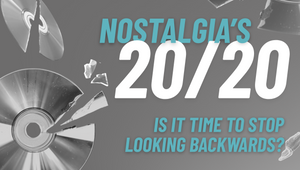
Keeping the Faith with the God of Creativity

“Advertising is not dead, but I have some bad news… it’s hurting a little bit.”
Ari Halper’s diagnosis of the ad industry is that it’s not in the finest health, but he believes that creativity is the cure. Speaking at Ad Stars 2018 in Busan, South Korea, the FCB New York Chief Creative Officer outlined his perspective on an industry where creatives and client trust are under greater pressure than ever and a range of possible business models that might just offer a way through.
On the one hand, he said client trust had been undermined over the years by everything from an obsession with awards to dodgy dealings in media – but on the other creative agencies were seriously devaluing their own creative product by giving it away for next to nothing.
“What’s gotten out of hand is our desire to win,” he said. “We just want to win. And so what happens is we will do virtually anything in order to do so, we will offer up our product, our work, our creativity for practically nothing. We cut our prices to win pitches, we cut our prices to do really cool work. This devalues the very thing we create and we’ve got to stop it.”
And while the current business model has seen a dive in the perceived value of creative among clients, agencies were also having to scramble to do so much more, with less staff and for less money.
“Within the last five years, our beautiful Don Draper world suddenly required us to do all that, whilst being top-tier content creators, by way of being goodvertising, altruistic masters, being innovative like start-ups, event marketing masters like PT Barnum, understanding everything that’s going on in the world. And we’ve got to do all of this while getting less than what we did when we just had to do television radio and print,” said Ari.
But while the current state of the industry might appear grim, Ari argued that creativity will ultimately reassert itself. In the age of mass one-to-one advertising, and targeted programmatic, samey messages will fail to get cut through. Despite Facebook’s banging of the six-second ad drum, stats from platforms like YouTube indicate that people are happy to engage with longer content – if it’s good. And, ultimately, if companies like Deloitte and Accenture are investing in creative, then there must be something in it.
“You might pray to whatever deity it is. In my case I’m an atheist, which is really code for I worship money. But I think we all have a common deity in mind –and that’s creativity. That’s what we love. Creativity can solve virtually anything; that’s what it does,” he said. “Creativity pushes us. It never gives up. It always finds a way.”
In response to Google Zoo’s Matty Burton’s question about whether we were potentially experiencing a ‘renaissance for creativity’, Ari drew parallels between the current appetite for quality entertainment and culture.
“I do actually think it’s a golden age of creativity, just as it is a golden age for content,” he said. Clients may insist that the hectic public can only cope with 15-second ads, but that’s not quite true. “If that were true then the top ten things on YouTube wouldn’t be well over a minute. People wouldn’t have time to binge watch an entire season of Ozark or Game of Thrones on the weekend if they were so, so busy… So, I do think the onus is on us then to deliver really great work because it is the content that ultimately muddies the waters. If we all deliver and make compelling ads in whatever form, whatever medium there will always be a need for storytelling.”
So what might an advertising industry that truly values creativity look like? Ari shared a number of options from the ‘Value-based Model’ (sell ideas like they were Mercedes rather than clapped-out bangers), the ‘Performance-based Model’, the ‘IP Model’ and a ‘Partnership-based Model’. But for the creatives in the audience, perhaps the most appealing was the ‘Fuck It Model’ – blow shit up.
And for any young or aspiring creatives in the audience who were finding their faith in the god of creativity seriously tested, Ari was relatively optimistic. “The good news is clients are not running out of products to sell. They have tons of shit to sell, they will always need advertising… it’s just what shape it will take.”















